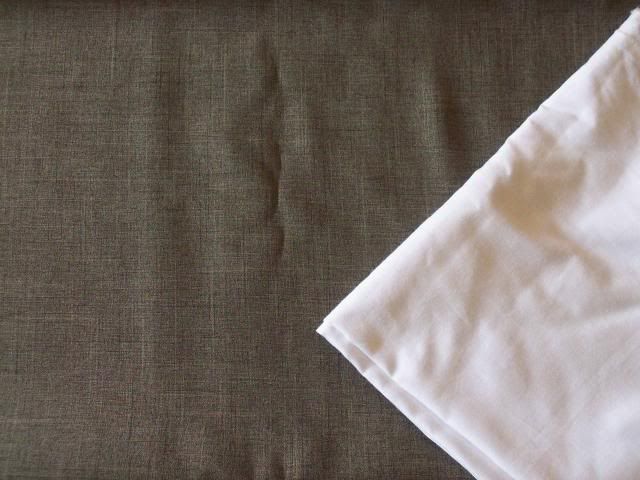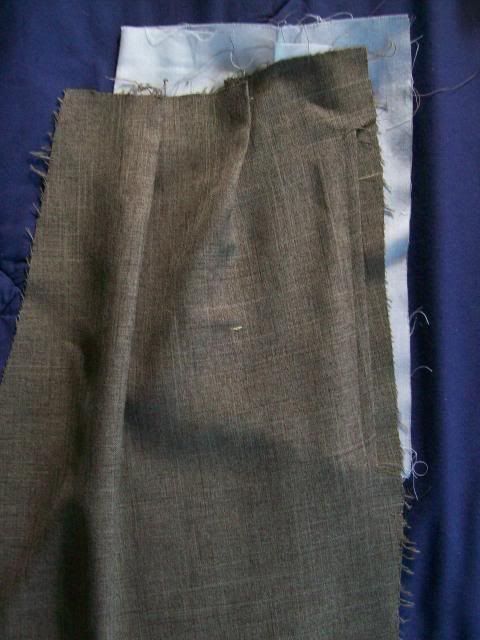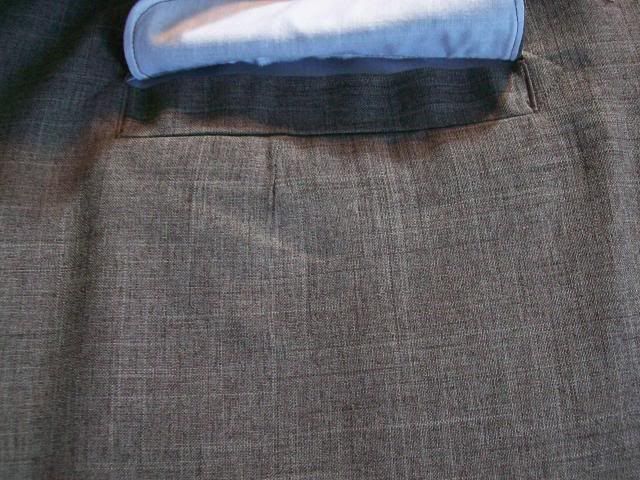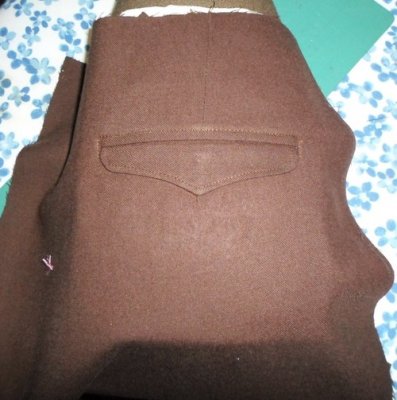I've been slowly progressing as a hobbyist "tailor" (the title used loosely here) for about three years now. I started off hand stitching to mend clothing, progressed to hemming trousers and sleeves by hand, and finally made my way to taking in shirt sides and letting out waistbands/seats on my first basic sewing machine about 8 months ago. I've been wanting to try my hand at actually constructing garments, but I haven't found the time to really dive into a project. Nick D's most recent suit project has inspired me to finally push ahead, so I figured I'd share my progress with you all, and I'm sure I'll need input from more experienced members once I get into the assembly and adjustment. I can only focus an hour or two a week on the project right now, so it will be slow going. Owning a pattern and David Coffin's book Making Trousers, I'm ready to have a go.
The Pattern:
It's an EvaDress 1940's trouser pattern no. 3988:
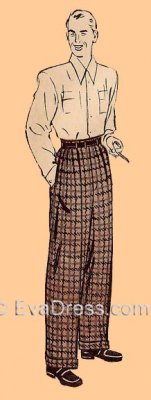
I pattern covers 32" to 38" but I'm a 30", so my first step was to grade it. I've never used a pattern let alone modified one. The cut-and-overlap method suggested by many online sources seemed pretty time-consuming for this pattern, and the vertical cut lines threatened to destroy some of the tailor's tack marks. I decided to rescale the pattern--I believe this process is called pattern shifting? I was able to get all the cut lines reduced, all the tack marks moved, and the pieces cut out in about 1.5 hours. I like the fact that I don't have vertical tape lines all over the place. I haven't adjusted the pattern for rise and inseam height yet because I'd like to make a muslin test piece first and then adjust from there. I haven't pressed the patter yet, so the pictures below make some of the straight cuts look wobbly.
Shifted hash marks and tack marks:

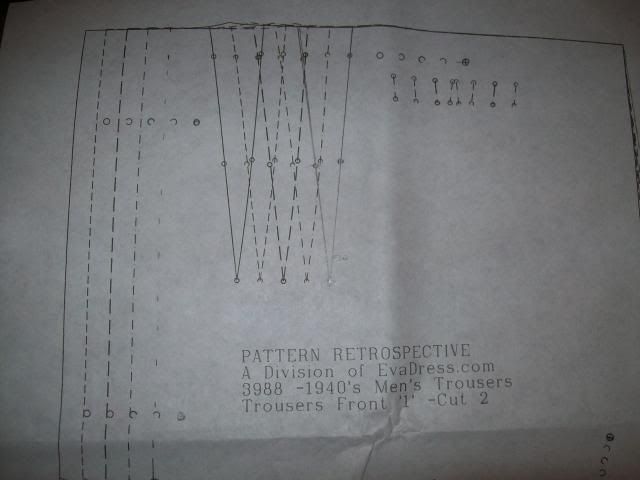
Finished patterns:
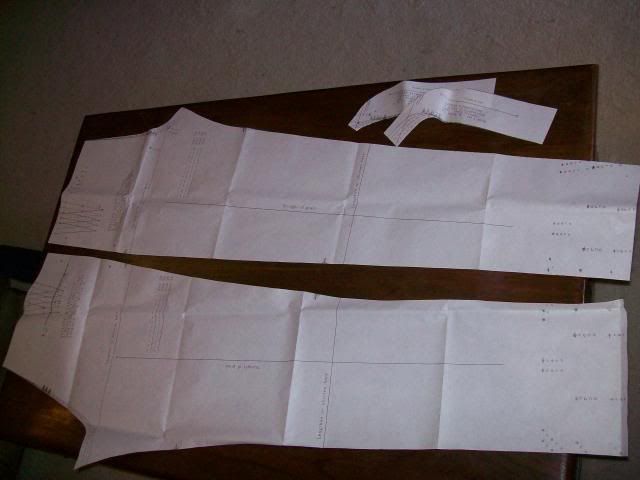
The next step will be getting some cheap muslin and cutting out the front and rears.
The Pattern:
It's an EvaDress 1940's trouser pattern no. 3988:

I pattern covers 32" to 38" but I'm a 30", so my first step was to grade it. I've never used a pattern let alone modified one. The cut-and-overlap method suggested by many online sources seemed pretty time-consuming for this pattern, and the vertical cut lines threatened to destroy some of the tailor's tack marks. I decided to rescale the pattern--I believe this process is called pattern shifting? I was able to get all the cut lines reduced, all the tack marks moved, and the pieces cut out in about 1.5 hours. I like the fact that I don't have vertical tape lines all over the place. I haven't adjusted the pattern for rise and inseam height yet because I'd like to make a muslin test piece first and then adjust from there. I haven't pressed the patter yet, so the pictures below make some of the straight cuts look wobbly.
Shifted hash marks and tack marks:


Finished patterns:

The next step will be getting some cheap muslin and cutting out the front and rears.
